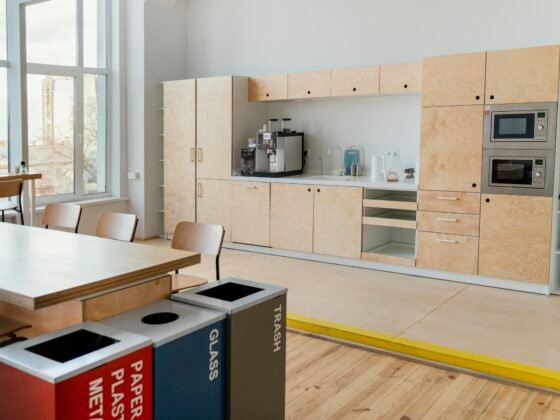The kitchen is often considered the heart of the home, a place where family gathers and memories are made. One of the most crucial aspects of a kitchen’s design is the countertop, or kitchen slab. Choosing the right slab design can enhance both functionality and aesthetics. This guide will explore various materials, styles, and considerations for selecting the perfect kitchen slab.
1. Importance of Kitchen Slab Design
The kitchen slab serves multiple purposes:
Functionality: It provides a workspace for food preparation, cooking, and dining.
Aesthetics: The design and color of the slab can significantly impact the overall look of the kitchen.
Durability: A good slab should withstand daily wear and tear, resisting scratches, stains, and heat.
2. Popular Kitchen Slab Materials
a. Granite
Granite is a natural stone known for its durability and unique patterns. Each slab has a distinct appearance, making it a popular choice for homeowners looking for a one-of-a-kind surface.
Pros:
Highly durable and scratch-resistant.
Can withstand high temperatures.
Available in a wide range of colors and patterns.
Cons:
Requires periodic sealing to prevent stains.
Can be expensive.
b. Quartz
Quartz countertops are engineered stone surfaces composed of around 90-95% crushed natural stone mixed with resins and pigments. This material offers a wide variety of colors and patterns.
Pros:
Non-porous, making it resistant to stains and bacteria.
Requires minimal maintenance compared to natural stones.
Available in a vast array of colors and styles.
Cons:
Not as heat-resistant as granite.
Can be less durable than natural stone.
c. Marble
Marble exudes elegance and luxury, making it a sought-after material for high-end kitchens. Its veined patterns are distinctive and timeless.
Pros:
Beautiful and unique aesthetic.
Excellent for baking due to its cool surface.
Cons:
Prone to scratching and staining.
Requires regular sealing and maintenance.
d. Laminate
Laminate is a budget-friendly option that mimics the appearance of natural stone. It consists of layers of plastic fused to particleboard.
Pros:
Affordable and easy to install.
Available in various designs and colors.
Low maintenance.
Cons:
Less durable than natural stones.
Can be damaged by heat and sharp objects.
e. Solid Surface
Solid surface materials, like Corian, are synthetic and can be shaped seamlessly. They are non-porous and available in various colors and finishes.
Pros:
Seamless appearance with no visible joints.
Easy to repair and maintain.
Non-porous, making it resistant to stains.
Cons:
Can be scratched or dented.
Typically not as heat-resistant as stone.
3. Slab Styles and Finishes
a. Polished
Polished slabs have a shiny, reflective surface that enhances colors and patterns. This finish is popular for modern and contemporary kitchens.
b. Honed
Honed slabs have a matte finish that provides a softer look. This finish is less slippery and less prone to showing fingerprints, making it ideal for busy kitchens.
c. Leathered
Leathered finishes have a textured surface that adds depth and character. This style is excellent for natural stones like granite and marble.
4. Color Selection
Choosing the right color for your kitchen slab is essential. Here are some popular color trends:
Neutral Tones: Whites, grays, and beiges are versatile and can complement various kitchen styles.
Bold Colors: Deep blues, greens, and blacks can create a dramatic focal point.
Earthy Hues: Browns and terracotta shades can bring warmth to a kitchen.
5. Design Considerations
When selecting a kitchen slab, consider the following factors:
a. Kitchen Style
The design of your kitchen—whether it’s traditional, modern, or rustic—should influence your choice of slab. For instance, a sleek quartz surface may suit a contemporary kitchen, while a warm granite might be better for a farmhouse-style kitchen.
b. Functionality
Consider how you will use the kitchen slab. If you do a lot of cooking, you might prioritize durability and heat resistance. For a space primarily used for entertaining, aesthetics may take precedence.
c. Maintenance
Different materials require varying levels of maintenance. Be sure to choose a slab that aligns with your lifestyle and willingness to perform upkeep.
6. Budgeting
The cost of kitchen slabs can vary significantly based on material, style, and installation. Here’s a rough breakdown:
Granite: $40 to $200 per square foot.
Quartz: $50 to $150 per square foot.
Marble: $50 to $250 per square foot.
Laminate: $10 to $40 per square foot.
Solid Surface: $35 to $100 per square foot.
It’s crucial to factor in installation costs, which can add an additional $30 to $100 per square foot.
7. Installation Tips
Proper installation is key to ensuring the longevity of your kitchen slab. Here are some tips:
Hire Professionals: It’s best to hire experienced installers, especially for heavy materials like granite and marble.
Check Measurements: Ensure accurate measurements before ordering your slab to avoid waste and additional costs.
Consider Undermount Sinks: For a clean look, consider using undermount sinks that sit below the countertop.
Conclusion
Choosing the right kitchen slab design is an essential decision that affects the functionality and beauty of your kitchen. By understanding the various materials, styles, and considerations, you can make an informed choice that fits your lifestyle and aesthetic preferences. Whether you opt for the timeless elegance of marble, the durability of granite, or the budget-friendly appeal of laminate, your kitchen slab will
be a central feature in creating a welcoming and functional space for years to come.


